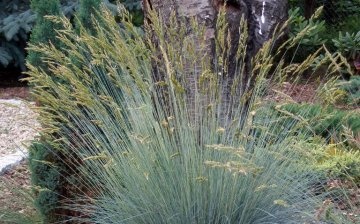Moliniya blue - decorative cereal
Moliniya blue belongs to the group of ornamental cereals. Plants are wide bushes with a height of 40 to 90 centimeters, a short creeping rhizome.
The leaves of the moth are grayish or with a bluish-green tint. The inflorescences are tall, opening like a fountain, with lilac flowers, they have a very decorative appearance and look great against the background of the water surface. The moth blossoms in July-August.
In nature, it grows in damp forest zones and in meadows, along river banks, on peat bogs.
The conditions of natural growth also determine the place in the garden for lightning blue. To grow successfully in summer, it needs coolness, good sunlight and abundant moisture. In heat or drought, it grows reluctantly and blooms worse.
Blue moth is not demanding for soil conditions: alkaline and acidic soils are suitable for it. This decorative cereal multiplies by dividing the bush.
The shores of artificial reservoirs, decorated with lightning, look spectacular. In autumn, the zipper also looks very decorative, as its curtains are painted in yellow or orange shades.
Lightning looks very good in natural gardens, planted next to shrubs and trees. Its decorative properties are also manifested in low mixborders, close to lawns.
Lightning grows rather slowly, over several years, because its decorative properties are preserved with minimal maintenance.
In the spring, do not rush to cut the zippers, as their growth begins rather late.
If you cut off the blue lightning inflorescences that have just begun to bloom and dry them, then they will look good in dry flower arrangements and ikebans.



